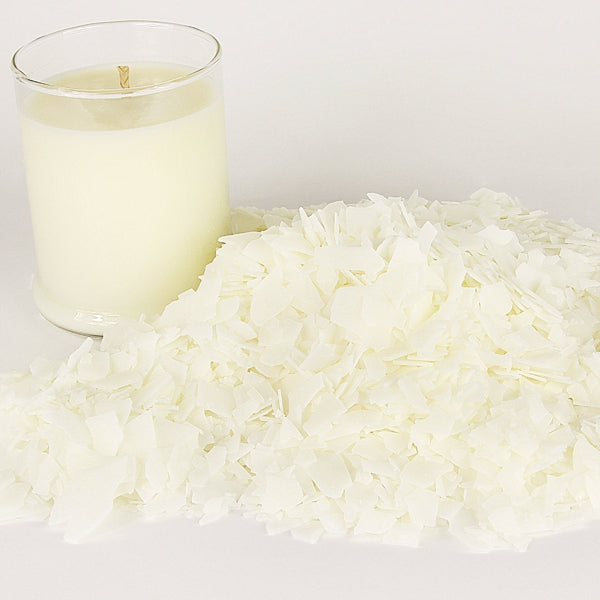Check out the World of Crystal Soy Candles and Home Fragrance Delights
Check out the World of Crystal Soy Candles and Home Fragrance Delights
Blog Article
From Wick to Wax: Comprehending the Chemistry Behind Soy Wax Candles and Their Environmental Influence
As we brighten our spaces with the cozy glow of candle lights, there exists a realm of detailed chemistry behind the relatively straightforward act of lighting a soy wax candle light. The choice in between soy and paraffin wax extends beyond mere visual appeals, diving into the realm of ecological impact and the extremely composition of the products. Comprehending the molecular framework of soy wax and its burning procedure clarifies the discharges launched into our surroundings. Join us as we decipher the scientific intricacies behind soy wax candles and explore their implications on our setting.
Soy Wax Vs. Paraffin Wax
When contrasting soy wax and paraffin wax for candle production, it is vital to understand the unique attributes and advantages of each material. Soy wax is a natural, renewable energy originated from soybean oil, making it eco-friendly and environment-friendly - home fragrance. In contrast, paraffin wax is a result of oil refining, which elevates problems regarding its ecological influence and sustainability
Soy wax candle lights melt cleaner and emit much less soot compared to paraffin wax candle lights, making them a much healthier selection for interior air high quality. In addition, soy wax has a reduced melting factor, permitting a longer-lasting candle light that spreads scent better. Paraffin wax, on the other hand, has a tendency to melt faster and much less cleanly, possibly launching unsafe chemicals right into the air.
From a sustainability viewpoint, soy wax is favored for its biodegradability and eco-friendly sourcing, straightening with the expanding consumer choice for eco aware products. While paraffin wax has been a typical selection in candle light making because of its affordability and simplicity of usage, the shift in the direction of eco-friendly choices like soy wax is getting momentum in the industry.
Chemical Structure of Soy Wax

Combustion Process in Soy Candles
The chemical composition of soy wax straight influences the burning process in soy candles, influencing aspects such as burn time, aroma release, and ecological effect. When a soy candle is lit, the warm from the fire thaws the wax near the wick.
The combustion effectiveness of soy candle lights is influenced by the purity of the soy wax try here and the top quality of the wick. Furthermore, soy wax candles have a lower ecological influence contrasted to paraffin candles due to their eco-friendly and biodegradable nature.

Environmental Benefits of Soy Wax

Taken into consideration a lasting choice to typical paraffin wax, soy wax supplies noteworthy environmental benefits that make it a preferred selection amongst eco-conscious customers. One substantial benefit of soy wax is its sustainable sourcing. Soy wax is originated from soybean oil, which is predominantly cultivated in the United States. The farming of redirected here soybeans aids sustain local farmers and reduces the dependence on non-renewable fossil gas made use of in paraffin wax manufacturing. Furthermore, soy wax is eco-friendly, suggesting it damages down normally without launching dangerous toxic substances into the environment. This characteristic makes soy wax candle lights a much more environmentally friendly option contrasted to paraffin wax candle lights, which are made from oil, a non-renewable resource. Additionally, soy wax burns cleaner and generates less residue than paraffin wax, adding to better indoor air quality and decreasing the requirement for cleansing and maintenance. In general, the environmental advantages of soy wax align with the growing demand for environmentally friendly and lasting products in the marketplace.
Recycling and Disposal Factors To Consider
Reusing and proper disposal of soy wax candles play a crucial role in preserving environmental sustainability and reducing waste in areas and households. When it involves recycling soy wax candle lights, the initial action is to guarantee that the candle light has actually melted completely. This can be achieved by permitting the candle to shed up until the wick is no longer usable, and after that allowing the continuing to be wax cool and solidify. When the wax has strengthened, it can be thoroughly eliminated from the container.

In regards to disposal, if recycling is not a choice, soy wax candle lights are eco-friendly and can be safely disposed of in most house waste systems. It is always recommended to examine with regional reusing centers or waste management solutions for particular standards on candle disposal to ensure correct handling and environmental defense.
Final Thought
Finally, the chemistry behind soy wax candle lights exposes their ecological advantages over paraffin wax candle lights. Soy wax, stemmed from soybean oil, burns cleaner and generates much less residue when compared to paraffin wax. The burning process in soy candle lights is more reliable, resulting in a much longer and much more also shed. In addition, soy wax is naturally degradable and eco-friendly, making it a much more lasting choice for candle light manufacturing. Recycling and appropriate disposal of soy wax candles even more add to their ecological effect.
When comparing soy wax and paraffin wax for candle light production, it is vital to recognize the distinct qualities and advantages of each product (candles).Soy wax candles burn cleaner and send out less soot compared to paraffin wax candles, making them a healthier choice for indoor air quality.Thought about a lasting choice to typical paraffin wax, soy wax provides noteworthy ecological benefits that make it a prominent option amongst eco-conscious customers. Soy wax burns cleaner and generates much less residue than paraffin wax, adding to far better interior air top quality and reducing the need for cleaning and upkeep.In conclusion, the chemistry behind soy wax candles reveals their ecological benefits over paraffin wax candles
Report this page